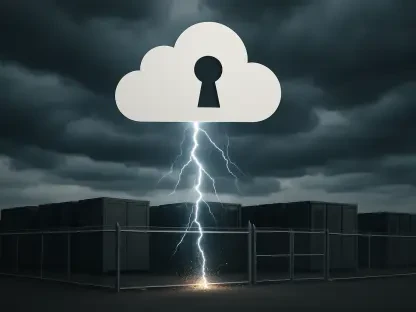Imagine booting up a computer after a routine system update, only to discover that the primary storage drive has vanished from the system, leaving critical files inaccessible and raising fears of permanent data loss. This alarming scenario has become a reality for some Windows 11 users following the installation of a recent update, known as KB5063878, released as part of Microsoft’s monthly Patch Tuesday security updates. Reports have surfaced detailing severe issues with solid-state drives (SSDs), and to a lesser extent, traditional hard disk drives (HDDs), where the drives disappear from the operating system after the update is applied. This glitch has sparked widespread concern among users who rely on these storage solutions for everything from personal documents to business-critical data. The potential for corruption or loss has placed a spotlight on Microsoft’s update process, urging users to take immediate steps to safeguard their systems while awaiting an official resolution to this troubling issue.
Understanding the SSD Malfunction Issue
A growing number of Windows 11 users have reported a distressing problem after installing the KB5063878 update, where their SSDs simply vanish from the system, rendering them unrecognizable by the operating system. Initial accounts of this issue emerged from social media platforms, with a Japanese user highlighting the glitch, and subsequent discussions on forums like Reddit confirming its scope across multiple users. The problem seems to disproportionately affect SSDs that are roughly 60% full, particularly after significant data writes, such as transferring 50GB or more. While SSDs with Phison NAND controllers appear to be especially vulnerable, the issue spans various manufacturers, and some HDDs have also been impacted. The core concern lies in the risk of data corruption, as the operating system often fails to detect these drives post-update, leaving users in a precarious position with potentially irreplaceable files at stake. This situation underscores a critical flaw that demands attention from both users and Microsoft alike.
Delving deeper into the specifics, the root cause of this SSD malfunction remains elusive, as Microsoft has yet to officially acknowledge or address the bug. Speculation among affected users and tech communities points to specific conditions, such as high storage usage combined with large data operations, as potential triggers for the issue. However, without confirmation from Microsoft, it’s uncertain whether the fault lies entirely within the update’s code or if it stems from interactions with particular hardware configurations. This lack of clarity has only heightened user frustration, as attempts to reach out to Microsoft and hardware manufacturers like Phison for comment have yielded no responses. The sporadic nature of the glitch suggests that not all systems are affected, likely due to variations in hardware setups or usage patterns. Nevertheless, for those impacted, the consequences are severe, emphasizing the urgency of identifying the underlying problem to prevent further disruptions and data loss.
Broader Challenges with Windows 11 Updates
Beyond the SSD issue, the KB5063878 update for Windows 11 versions 24## and 23## has introduced a host of other complications, reflecting a recurring pattern of instability in Microsoft’s cumulative updates. This patch was intended to address 119 vulnerabilities across various Microsoft software while introducing minor usability improvements, such as a quick machine recovery feature for critical boot errors. However, additional glitches have emerged, including installation failures through Windows Server Update Services, primarily impacting business and enterprise environments. Another reported error involves the “Microsoft Pluton Cryptographic Provider” failing to load, though Microsoft has clarified that this feature, still under development, poses no immediate threat. These ancillary issues, while resolved in some cases, highlight a broader trend of update-related disruptions, reminiscent of past incidents where patches triggered system-wide errors like Blue Screen of Death crashes, raising questions about update reliability.
Adding to the complexity, Microsoft’s ongoing push to transition users from Windows 10 to Windows 11, especially with Windows 10 support ending in mid-October, places additional pressure on update stability. Alongside this, warnings about upcoming Windows Secure Boot certificate expirations set for June 2026 remind users of the need to stay current with system requirements. Yet, the recurring flaws in updates like KB5063878 create hesitation among users considering the upgrade, particularly when critical components like storage drives are at risk. These challenges paint a picture of a tech ecosystem struggling to balance the introduction of new features and security patches with the fundamental need for system stability. For many, the cumulative effect of these issues erodes confidence in Microsoft’s ability to deliver seamless updates, prompting a cautious approach to installing patches until thorough testing or official fixes are confirmed to prevent further system disruptions.
Steps to Safeguard Critical Data
Given the severity of the SSD issue tied to the KB5063878 update, taking proactive measures to protect data has become paramount for Windows 11 users. The most straightforward and effective strategy is to delay installing this particular update until Microsoft provides clarity or a comprehensive fix for the reported bug. This cautious approach minimizes the risk of encountering the glitch that causes drives to disappear, especially for those with SSDs nearing high capacity or frequently handling large data transfers. In the meantime, ensuring that all critical files are backed up to an external drive or cloud storage solution offers an additional layer of security against potential corruption or loss. This step is vital for anyone relying on their system for essential work or personal data, as it provides a safety net should the worst-case scenario of drive failure occur due to an update-related malfunction.
For users who have already installed the update or cannot delay it due to security requirements, vigilance is key in monitoring system behavior post-installation. Keeping an eye on storage drive visibility and performance can help detect early signs of trouble, allowing for swift action if a drive becomes unrecognizable. Rolling back the update through Windows 11’s recovery options may also be a viable solution for some, though success depends on individual system configurations. Additionally, staying informed about any forthcoming patches or announcements from Microsoft regarding this issue ensures that users can act quickly once a resolution is available. While these steps cannot guarantee immunity from the bug, they collectively reduce the likelihood of catastrophic data loss. Reflecting on past update challenges, it’s evident that such precautions were often the difference between minor inconvenience and major disruption for many users navigating Microsoft’s evolving software landscape.









